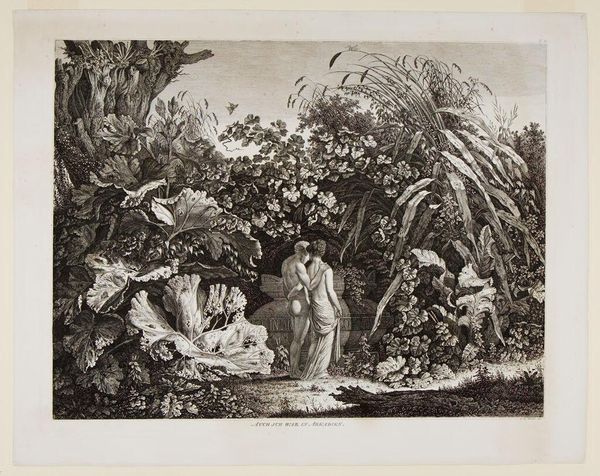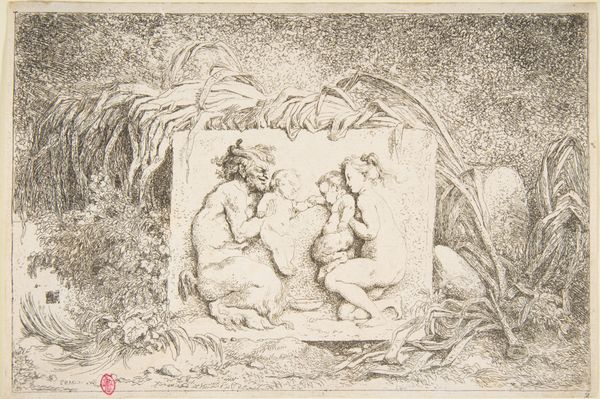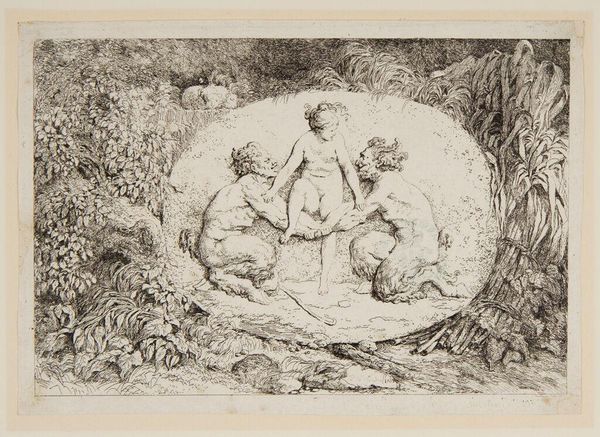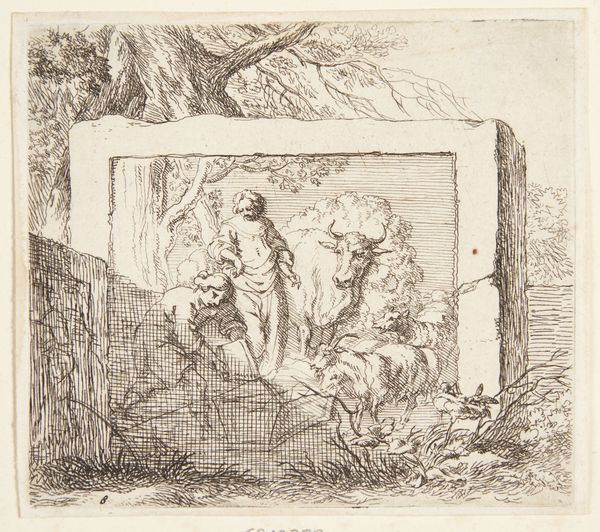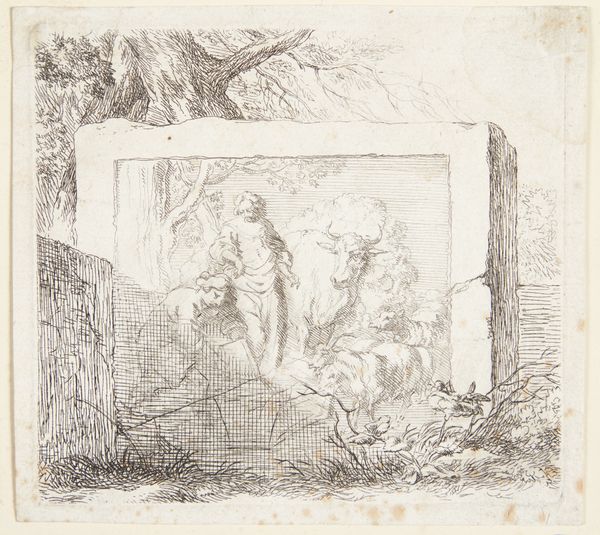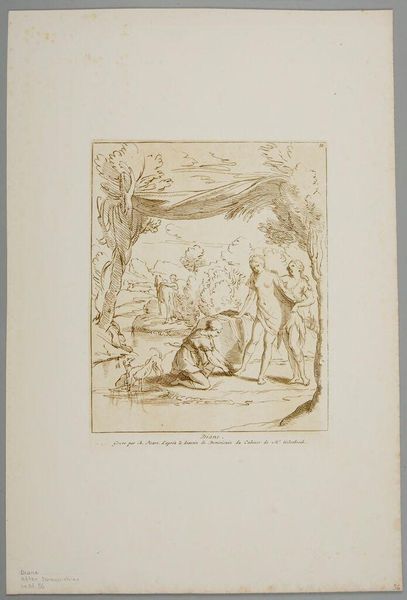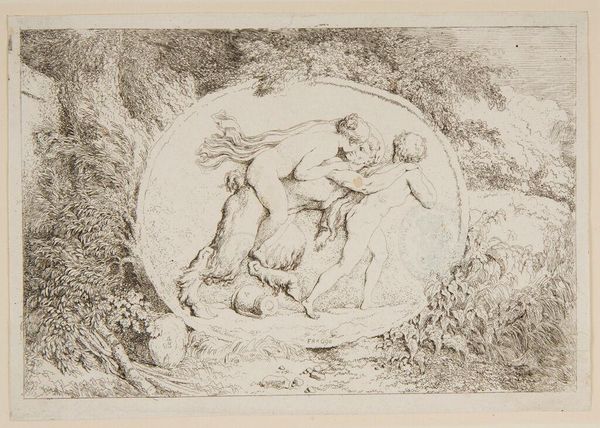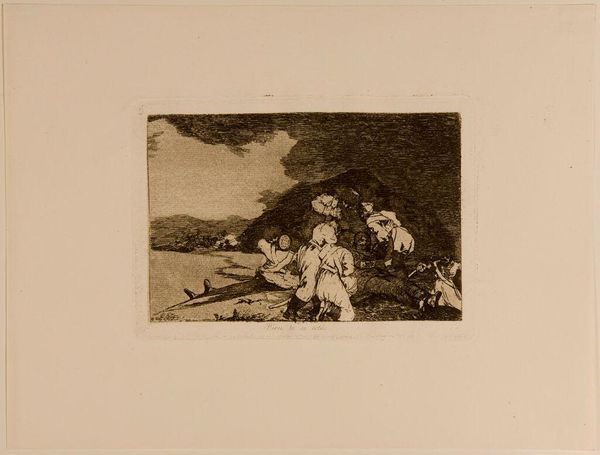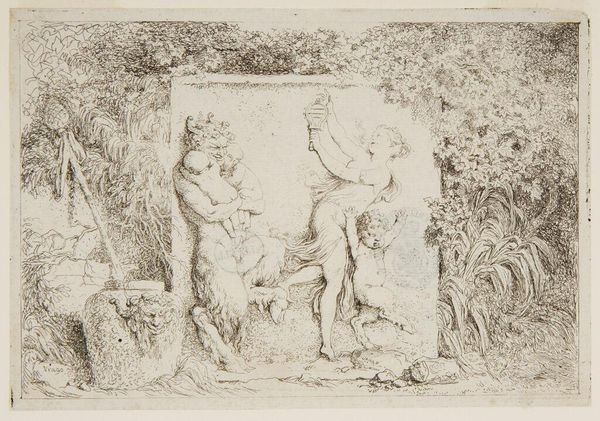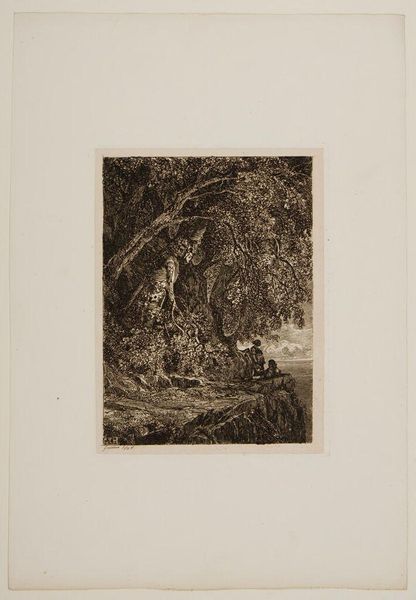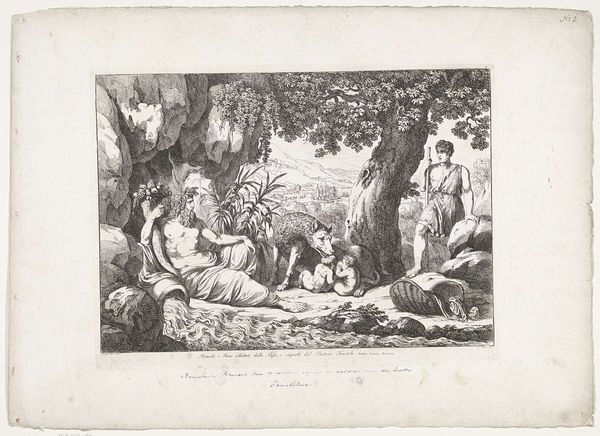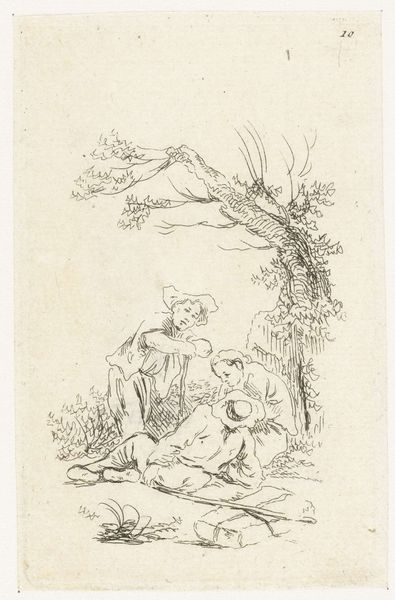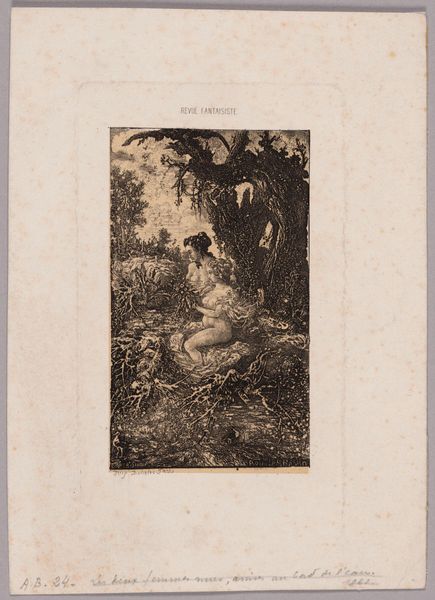
Plate Three: Betrothal of a Baby Satyr and Baby Nymph Held by a Nymph and a Satyr c. 18th century
0:00
0:00
Dimensions: plate: 14.5 x 21.5 cm (5 11/16 x 8 7/16 in.)
Copyright: CC0 1.0
Curator: This etching, "Plate Three: Betrothal of a Baby Satyr and Baby Nymph Held by a Nymph and a Satyr," is by Jean-Honoré Fragonard, a well-known 18th-century artist. It now resides at the Harvard Art Museums. Editor: It has a playful, almost dreamlike quality. The figures seem to emerge from the surrounding landscape. Curator: Absolutely, Fragonard's expert use of etching allows him to explore the textures of the satyrs and nymphs, blurring the lines between human and animal, nature and culture. Consider how the etching process itself, with its acids and metal plates, mirrors the transformative themes within the artwork. Editor: I'm curious about the context. Was Fragonard commenting on societal expectations of marriage, or perhaps class mixing, by depicting this betrothal of mythological beings? Curator: Possibly. But I'm more interested in the paper, the ink, the skill required to produce this. Who owned it? How was it circulated, and to whom? These questions help us understand the artwork's journey through various social and economic systems. Editor: It certainly provides a glimpse into the social imagination of the period, the fascination with nature, the classical past, and the institution of marriage. Curator: Indeed, and through understanding its materials and production, we can see art as more than just aesthetic value, but a vital part of economic exchange.
Comments
No comments
Be the first to comment and join the conversation on the ultimate creative platform.
